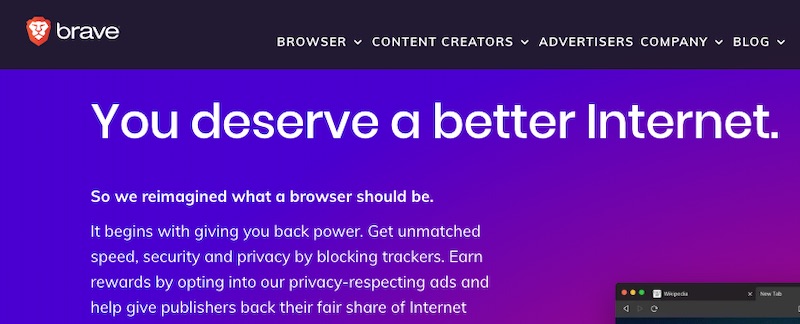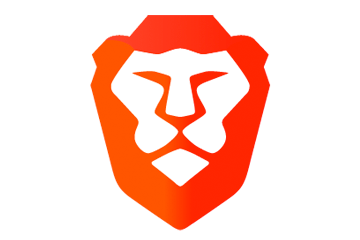
The Brave web browser launched in 2016. It has attracted privacy-focused tech enthusiasts.
Brave is a niche web browser popular with tech enthusiasts for its privacy, ad blocking, and unique crypto-currency-based advertising and rewards system.
Launched in 2016, the Brave web browser runs on Chromium, which is the same fast, reliable, and stable browser engine that runs Google’s Chrome. The Brave browser aims to be more efficient and faster than popular web browsers while providing an exceptional level of privacy. By some estimates, Brave is as much as eight times faster than browsers that allow tracking.
Although Brave is far from mainstream, it does offer opportunities for ecommerce merchants.
Very Niche
In October 2019, Brave’s parent company, Brave Software, announced that the browser had passed 2.8 million daily active users and 8 million monthly active users.
A million is a large number. But in terms of web browser users, it is tiny. Brave’s 2.8 million daily active users would be a rounding error for Google Search, which gets more than 60,000 queries per second or about 3.6 million search queries per minute.
But being niche is not necessarily bad.
From the perspective of an ecommerce marketer, the folks who use the Brave web browser are likely tech-savvy, concerned deeply about their privacy, politically active, and affluent.
Just knowing that Brave exists takes a greater degree of tech-awareness than using Chrome, Microsoft Edge, or Apple Safari. And knowing that Brave exists won’t be enough for most people to switch. Thus, the folks who choose to use Brave are presumably engineers, web developers, and other relatively high wage earners.
If your online store sells socks or power tools, for example, Brave users are not likely promising prospects. But, if you sell sophisticated software, computers, accessories, and similar, the Brave audience could be worth marketing to.
Privacy-focused
You won’t reach Brave users with certain types of online ads or nearly any form of retargeting. That’s because, in the words of journalist Matthew Hughes, “The Brave browser is characterized by an unapologetically pathological focus on user privacy.”
First, Brave forces sites to use secure connections when possible, limiting some forms of tracking and hacking.
Then, using what it calls “shields,” the browser also blocks trackers, tracking-related web cookies, and what the company calls “data collection parasites.”
Beyond this, the Brave browser does what it can to be relatively more difficult to identify users.
For example, many marketers will use what is sometimes called “browser fingerprinting” to recognize returning visitors.
Websites know a visitor’s browser, operating system, and most of the browser extensions. Collectively, this makes it is possible to identify someone without using a cookie. If a shopper visited your site many times and purchased an item on the 10th session, your marketing team could, potentially, connect the dots and better understand the customer’s journey.
While this could be good for marketers, shoppers don’t always like this sort of tracking. And Brave obscures some of the information required for browser fingerprinting, making it harder to identify an individual.
Ad-blocking and smudged browser fingerprints, however, won’t stop websites from reaching Brave users.
First, Brave doesn’t block first-party cookies. This means that ads on a Google search results page will still appear when someone searches Google via the Brave browser.
This same is true for DuckDuckGo, which is a privacy-focused search engine that displays non-tracking Microsoft (Bing) ads.
Thus, paid search campaigns may still reach Brave users.
Brave Rewards
The Brave browser also has a unique advertising and rewards model.
This model starts with Brave Rewards. Brave blocks certain types of ads. But many publishers depend on ad revenue. So Brave came up with Brave Rewards to pay publishers for the attention Brave users give them.
A publisher can register with Brave. Then each time a Brave user visits that publisher’s website, the software notices and anonymously records it. At the end of the month, those publishers receive a proportional share of the user’s contribution. The contribution is saved and paid out in a crypto-currency called BAT — “basic attention token.”
Moreover, Brave will also pay users to view secure, non-prying ads.
Roughly 70 cents out of every dollar you spend in Brave advertising will go to the Brave user that views your ads.
In short, Brave is a privacy-focused browser used by relatively few folks. It blocks tracking ads, but it also provides a way for businesses, such as ecommerce merchants, to reach shoppers.







